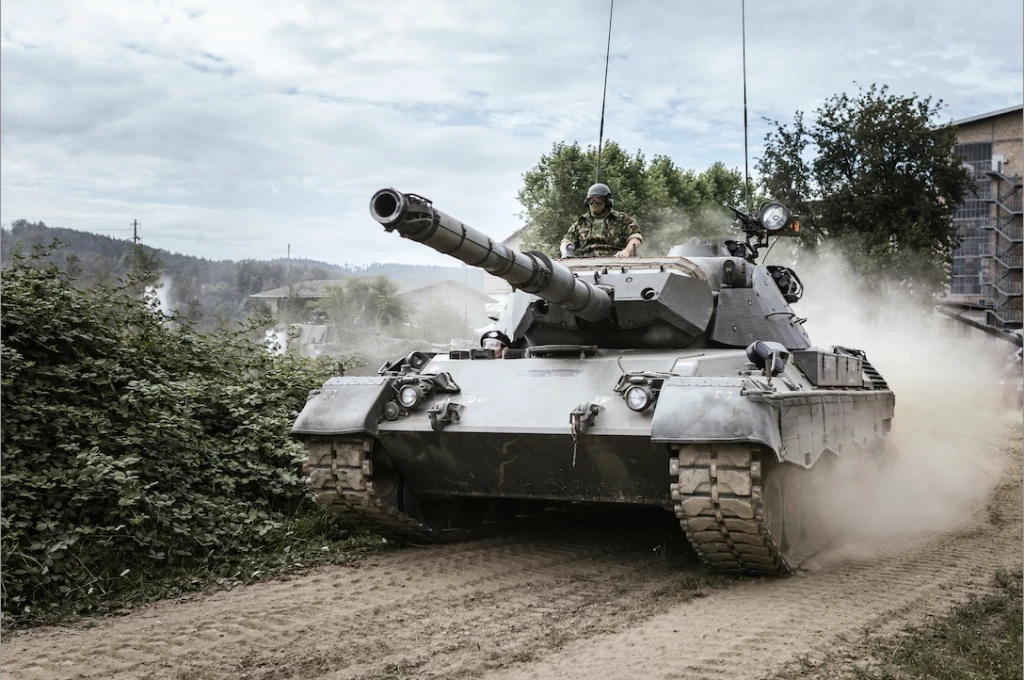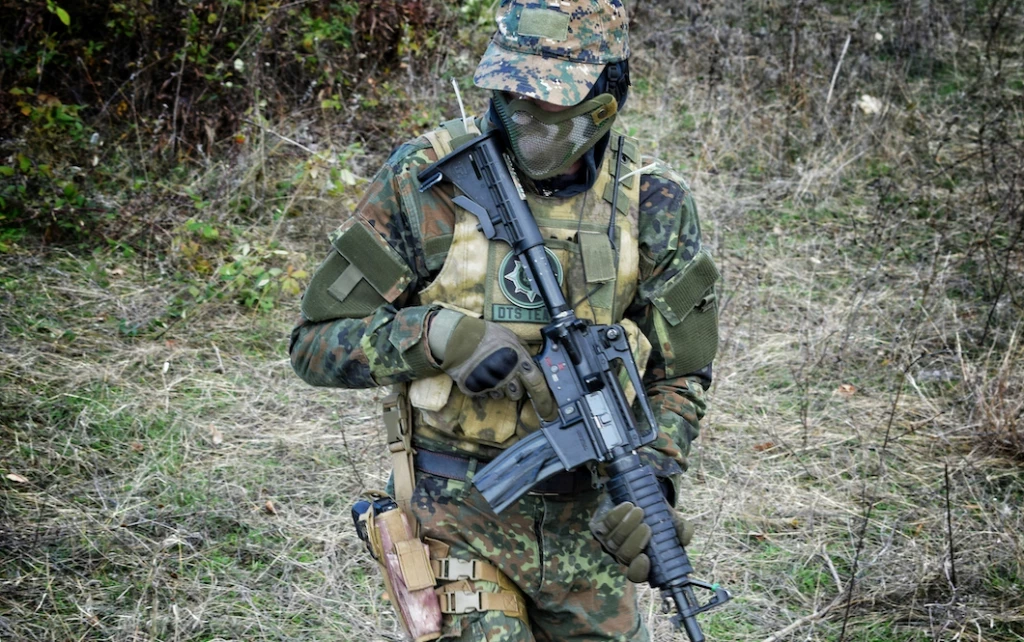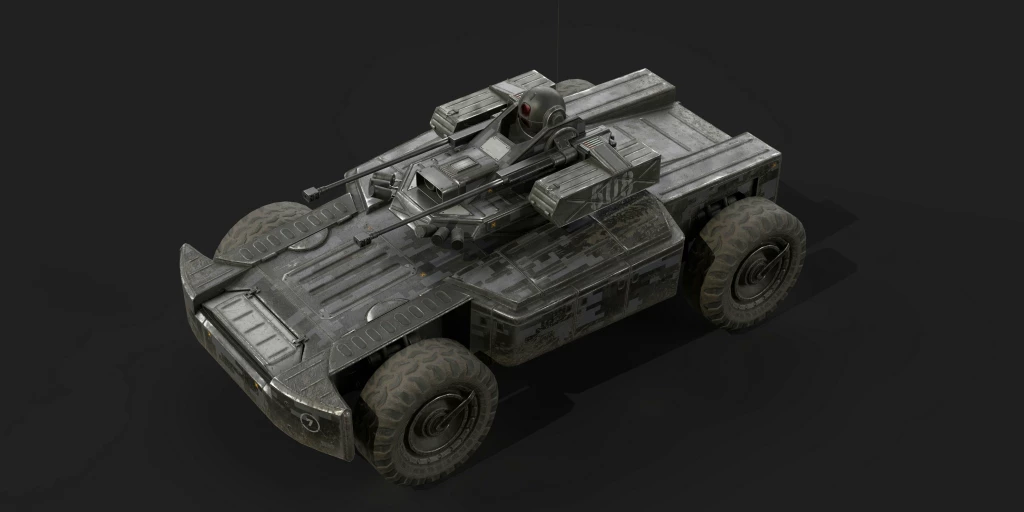Mortar carrier system 'negates' recoil problem
Add bookmark
An early version of the Alakran mortar carrier system. Image: NTGS.
For years, the issue of reducing or eliminating mortar recoil force has been one of the most in need for proven solutions among mortar crews. The dynamic load produced by the firing of shells can impose a massive burden on support structures, including the vehicles from which they are often fired. Soft recoil technology has been on the market for some time, but the dissipation of energy is still far from perfect.
The requirement for a reliable solution is all the more needed in today’s specific combat environment, where forces need to be highly mobile or find themselves at risk from the likes of RPGs, sniper fire, or even high-end counter-artillery. For many, that same pressure is encouraging many militaries to replace or augment vehicle fleets with lighter, faster vehicles.
Defence company NTGS, part of Everis Aerospace and Defense, based in Spain, believes it has the ultimate answer in the form of the Alakran mortar carrier system. Alakran deploys from the vehicle to the ground on a base-plate platform, firing 81mm or 120mm rounds and sending the recoil energy directly into the ground. This means there is no need for any vehicle reinforcement, which in turn means that lighter vehicles – both cheaper and transportable by helicopter – can be deployed as mortar carriers.
“Recoil mitigation solutions are, from our perspective, fighting against physics, and that’s not good because physics – in the long term – always wins,” says Javier Estrella, NTGS head of engineering.
[inlinead]
“What I mean is that these solutions must absorb a lot of energy – around 850,000 Joules when shooting 7 charges. This energy is absorbed by the recoil absorber and part of it is transformed into heat, but heat will limit the operability of the mortar barrel. Plus, a large per centage of the energy won’t be absorbed and transferred to the vehicle. Imagine an excellent recoil absorber system that could absorb up to 70 per cent of the energy – even that vehicle still has to absorb 255,000 Joules or the equivalent of five Humvees falling from 2 metres onto the vehicle.”
Everis claims its solution – which has been in various stages of development for five years – offers a near-100 percent energy transference, regardless of the size of the mortar. Its developers have aimed to simplify the design to its maximum potential, while ensuring it is still robust under strenuous operating environments. One of the areas being scouted for customers is the Middle East, where equipment not only has to hold up under hot and dusty climates but is prone to insurgent tactics and therefore sees the shoot-and-scoot factor as vital for local forces.
Fortunately, after the vehicle comes to a stop, Alakran is said to require only 30 seconds to be ready to fire, two seconds to re-aim after shooting, five seconds to aim at a new target, and 15 seconds to be on the move again. Tests have been conducted in which the system has, in one day, fired over 100 rounds, changing position after every 5 shots, and without any failure.
While the concept of transferring the energy into the ground rather than attempting to fight the recoil seems a surprisingly simple idea, the design itself has a number of undisclosed complexities and its mechanics have presented engineers with more than enough to scratch their heads over. Aside to the idea of effectively using the ground as part of the system, the fact that troops dismount to operate the mortar provides more space to prepare and load. In addition, it means that issues concerning the height of the vehicle or existing components connected to the vehicle floor are practically irrelevant, so integration with existing vehicles is easier to achieve.
Survivability has been a consideration in other areas. When troops operate from the ground instead of elevated on the vehicle, their profile is reduced and the risk of sniper fire is lowered. Likewise, the deployment system is no longer hydraulic but electro-pneumatic, so the manual procedure reportedly allows a pair of soldiers to move the tube in and out the vehicle in just two minutes.
In its latest form, Alakran supports multiple-round simultaneous impact, having added a display that helps operators avoid mistakes during this type of fire. A functionality called ‘zonal shooting’ has been installed that allows the system to automatically makes slight adjustments to the barrel position over a wide area (100x100 or 200x200).
At present, the company has had “high interest from several customers” in the Middle East and has at least one pre-order for 100 units set to be confirmed before the end of the year. Special operations forces and expeditionary forces have reportedly shown interest in the product, while given the company’s origins, the Spanish Army is an obvious commercial target for the future.
“The overall system is at least 40 percent less than the cost of the nearest competitor for the same fire capabilities,” claims Estrella, who also says the company offers on-site maintenance and a 1-year guarantee with an extension guarantee program for an additional 15 percent yearly.






















